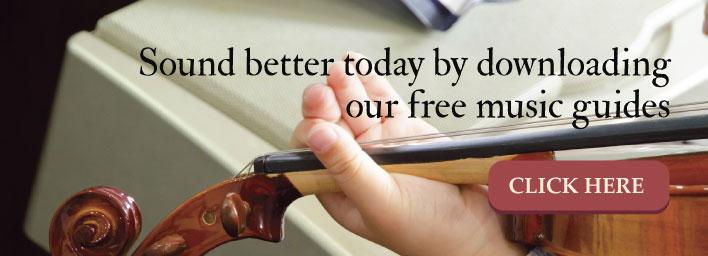Secret Performance Techniques From Top Violinists

Beginner and intermediate violinists who want to make progress know that they must practice deliberately and with regularity. Constantly challenging yourself with new techniques and pushing the boundary of your comfort zone is one of the best ways to excel. And although you probably have a great music instructor, learning the performance techniques of other musicians can help you advance your skills beyond your daily routine.
Playing music is like any other skill set; one person sharpens another. There are plenty of people who know more than you do about performing, and since many of them are willing to share that knowledge with intermediate and beginner violin students, you can incorporate that information to make progress. The following list of “secret” musician performance techniques are garnered from a variety of professional music masters. And even if you’re not at the level where you can incorporate them just yet, the information will be a valuable addition to your performance knowledge.
Practice Tips
More than anything, beginner violin students must know how to properly practice. Otherwise, you’ll never be able to apply the other performance tips. In a recent Q&A session at the Kaufman Music Center, Joshua Bell shared advice about practicing:
- Practice “often” and “slowly.” Bell explained, “Playing at a slow tempo helps get the music ingrained in your body. It can be easy in concert situations to play too fast.”
- “Focus on challenging passages” and “Set goals.”
- “Tell a story.” He said, “Having perfect technique is great, but what’s really important is the emotion and the story you’re telling with the music. Make it sound like you’re playing it for the very first time!”
In an interview with Classic FM, Itzhak Perlman shared his pro-tips for effective practice. His advice:
- When asked about how to get the most out of practice sessions, he explained, “practicing with your head for two hours” is better than mindless practice for eight hours. He further suggested that you practice “slowly,” “with an agenda,” and “make sure that you practice in small sections.”
- When discussing how to deal with stage jitters, Perlman explained that “since you can’t get rid of nerves… you should be familiar with what happens to you” so that you can deal with it.
- The best piece of advice he had for young musicians was, “be flexible, be imaginative… if it works, why not?” Essentially telling students to be open to their own music goals.
Master Class Tips
In a recent Master Class in Miller Hall at the Manhattan School of Music, violinist Sarah Chang shared her knowledge with a group of 8-13 year old students. Highlights included musician performance techniques and tips, such as:
- Tuning—Chang encouraged one student to learn to tune her violin properly, and also tune the A-string slightly higher than a piano, to “accommodate for strings going flat as they are played.”
- Phrasing—She encouraged the students to concentrate on the most important note and suggested that they play it so that “it sounds like that’s what you planned to do, and not just because the bow decided to go that way.”
- Performance Placement—“Make sure that you play facing the audience”
- Trills—Chang explained, “When you trill, the upper note of the trill often sounds too flat. Think of overshooting the top note. When you play it slowly, it sounds out of tune – but when you speed it up, it’s in tune.”
- Avoiding wolf tones—“I avoid it by playing slightly sharp,” she said. “It means playing out of tune, but if I have to choose between that and the wolf, I’ll take out of tune!”
She also added that for students who are interested in a professional career, “Always have someone that you trust – a teacher, parent or friend – that you can go to for advice.” That way you can avoid the mistakes inherent in the business.
Top Musicians Share More Tips
Simon Fisher wrote in The Strad in July 1997, regarding tone production, “The most important factors are the speed of the bow, the amount of bow pressure used, and the bow’s distance from the bridge.” He further explained, higher speeds require more pressure, and because the string area closest to the bridge has a higher tension, it also needs greater pressure. Regarding string crossings, Fisher said, “you can easily improve string crossing passages by deliberately crossing too early.”
Isaac Stern on what makes an artist: “It takes a very peculiar combination of humility and arrogance. You need arrogance to believe in ideas of your own and humility enough to know you will never find the final answer.”
Incorporating new information that can increase your execution and aptitude is a great way to build your performance strengths, and these secretes of the pros are a great start.


